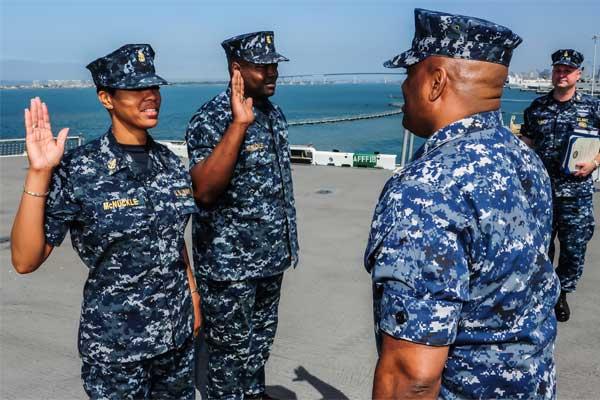Co-location for dual military couples in the Navy should soon get easier thanks to a new personnel policy released March 12.
The instructions detailed in a Navy Personnel Command message known as MILPERSMAN 1300-1000, are aimed at making it simpler for married Navy couples to request co-location and easier for detailers to assign duty stations while instituting a requirement that a flag officer review any case in which co-location is denied.
"The Navy realizes how important families are, and when they're not whole it can add stress to a sailor's life," officials said in a press release. "Co-location of dual military couples is part of supporting families. It is a priority, along with balancing fleet readiness. The revised policy updates the collocation and distribution procedures and makes orders negotiation less cumbersome."
As more billets open to officer and enlisted female sailors, the practice will become increasingly simple, the release notes.
"The fleet is invested in co-location. For example, the submarine community is currently expanding homeport options for female officers and will be extending options for female enlisted in the future," it states.
As part of the update, sailors will now only be required to request co-location once instead of during every new orders negotiation. That request will be kept on file by the sailor's detailer unless he or she requests for it to be removed, according to the Navy.
The message notes that co-location between a sailor and a member of a different service "may not always be possible." It also states that the policy does not apply to spouses who are non-military personnel, including Defense Department civilian employees.
"Co-location" is considered anything within a 90-mile radius or, in the Seattle area, bases located on the same side of the Puget Sound, the message states.
To be eligible for a new co-location, married sailors must make individual requests to their detailers. Sea and shore rotations will be maintained whenever possible during any resulting relocation, the message states, and those requesting or receiving specific training "will be assigned to an appropriate tour for these newly acquired skills, which may preclude or limit spouse collocation consideration for the duration of this post-training assignment," it states.
-- Amy Bushatz can be reached at amy.bushatz@military.com. Follow her on Twitter at @amybushatz.






























